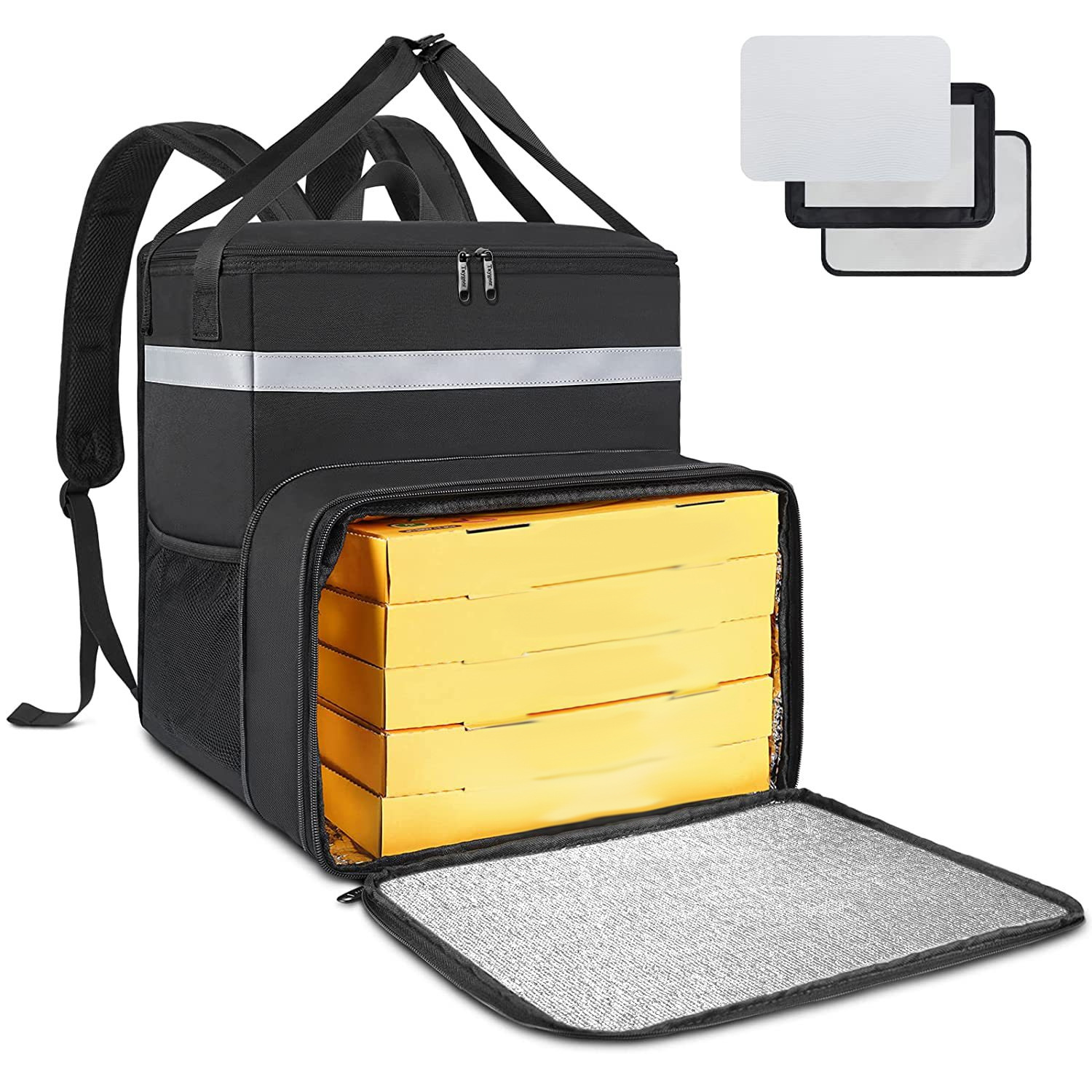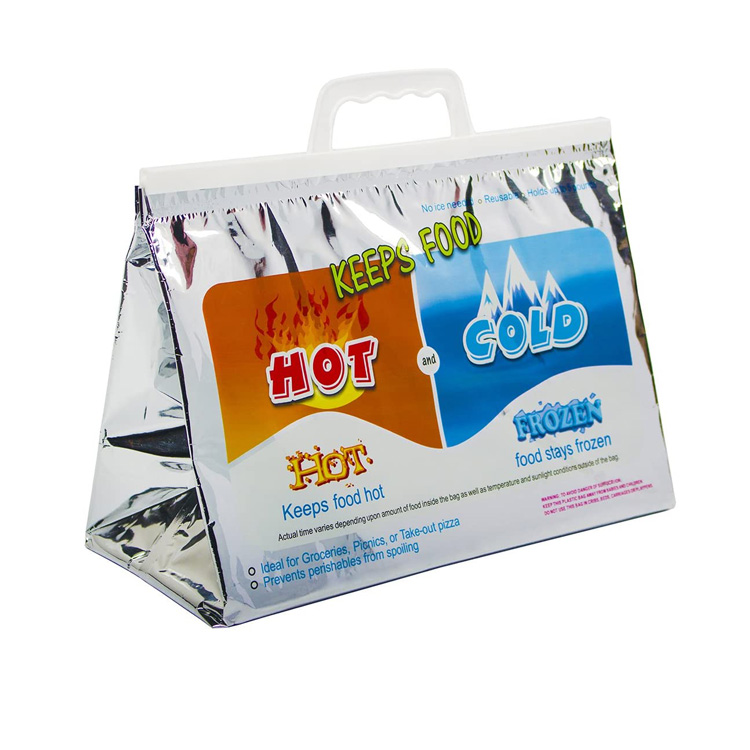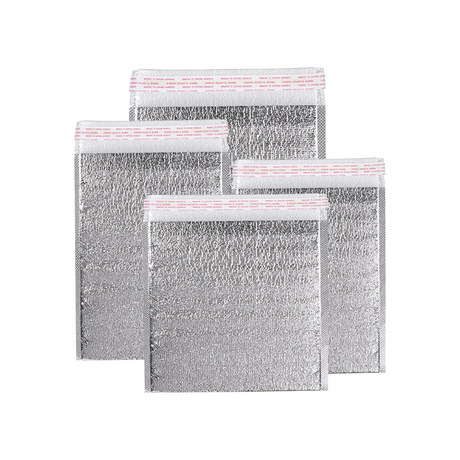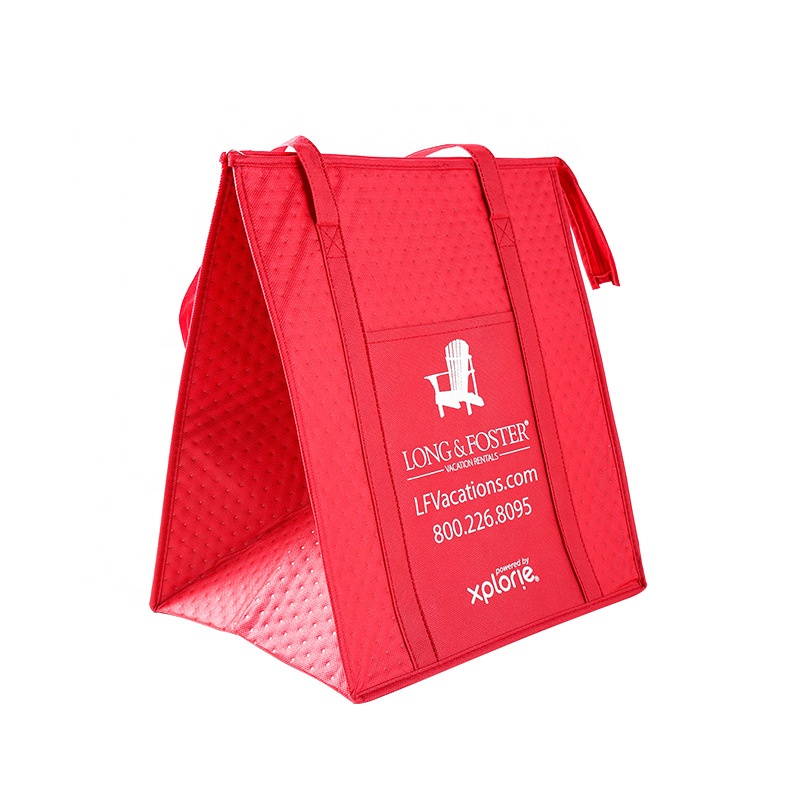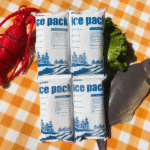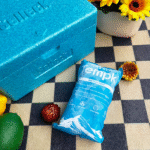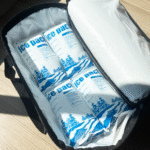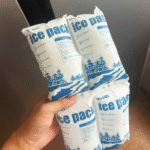De la livraison de nourriture périssable au transport critique des vaccins, packs de glace froide sont essentiels pour maintenir l'intégrité des produits dans les chaînes d'approvisionnement mondiales. À mesure que la durabilité devient une priorité, Les progrès des matériaux et de la conception intelligente sont de remodeler ce créneau. Cet article plonge dans la science, applications, et les éco-innovations conduisant la technologie de pack de glace froide, avec un aperçu des solutions de glace sèche de pointe de Tempk.

1. Innovations de matériaux améliorant l'efficacité thermique
Les packs de glace modernes exploitent les matériaux avancés pour optimiser les performances et la durabilité:
-
Formulations de bio-gel: Hydrogels à base de plantes (Par exemple, Mélange d'agar-k-carragenan) congeler -18°C et maintenir des températures inférieures à zéro pour 72+ heures, surpassant les gels de cheville traditionnels par 40%.
-
Matériaux à changement de phase (PCMS): Les PCM d'hydrate de sel avec des additifs d'oxyde de graphène atteignent -25° C stabilité et 90% Recyclabalité, Remplacement de la glace sèche à usage unique dans les expéditions pharmaceutiques.
-
Coquilles biodégradables: Les enveloppes composites PLA et PBAT se décomposent en 6 à 12 mois sous le compostage industriel, Élimination de la pollution microplastique.
2. Applications critiques dans toutes les industries
-
Livraison de nourriture: Les packs de gel non toxiques avec des revêtements résistants aux UV conservent des kits de repas à 0–4 ° C pour 48 heures, Réduire la détérioration de 30%.
-
Médicaments: Les packs basés sur PCM sont conformes aux normes PQS de qui entretiennent 2–8 ° C pour 96+ heures, Assurer l'efficacité des vaccins.
-
Commerce électronique: Packs de glace réutilisables avec des doublures à airgel de silice coupés l'utilisation du réfrigérant par 50% Pendant le maintien -15°C Dans une chaleur ambiante de 35 ° C.
3. Défis et percées de la durabilité
-
Recyclage les lacunes: Seulement 12% des packs de gel sont recyclés en raison de la construction de matériaux mixtes. Les conceptions mono-matériales de Tempk réalisent 100% recyclabilité en boucle fermée.
-
Consommation d'énergie: Gelling Comptes pour 70% d'empreintes de pas en carbone de pack de glace. Les centres de stockage à froid à énergie solaire réduisent les émissions 45%.
-
Obstacles réglementaires: La règle FSMA de la FDA 204 et le mandat SUPD de l'UE tratable, Matériaux non toxiques, accélérer r&D dans des alternatives bio-basées.
4. Tendances futures: Solutions intelligentes et circulaires
-
Packs compatibles IoT: Bluetooth Temperature Locgers (± 0,2 ° C) Synchronisation avec les applications pour la conformité en temps réel de la chaîne du froid.
-
PCMS auto-régulants: Les matériaux pilotés ajustent les points de fusion en fonction des températures externes, prolonger la durée de refroidissement par 60%.
-
Packs de glace comestibles: Gels à base d'amidon infusés de conservateurs naturels dégrader en toute sécurité dans les décharges tout en empêchant la déshydratation des aliments.
5. Packs de glace sec du tempk: Diriger le changement de refroidissement écologique
Tempk Série Zeroice Pro redéfinit la fiabilité de la chaîne du froid avec:
-
Formule de carbone ultra-faible: À partir de 100% Co₂ recyclé, Ces packs frappent -78°C Sans résidus dangereux, Idéal pour les transplantations d'organes.
-
Conception réutilisable: Résister à 500+ Cycles de congélation (3x Moyenne de l'industrie) et intégrer les balises RFID pour le suivi du cycle de vie.
-
Système zéro déchet: Participer à Tempk’s Programme CoolCycle- Reprendre des packs d'occasion pour la désinfection et la recapture du CO₂, réalisation 98% efficacité circulaire.
En fusionnant des performances extrêmes avec une gestion planétaire, Les packs de glace sec de Tempk définissent de nouveaux repères pour la logistique de la chaîne froide durable.







